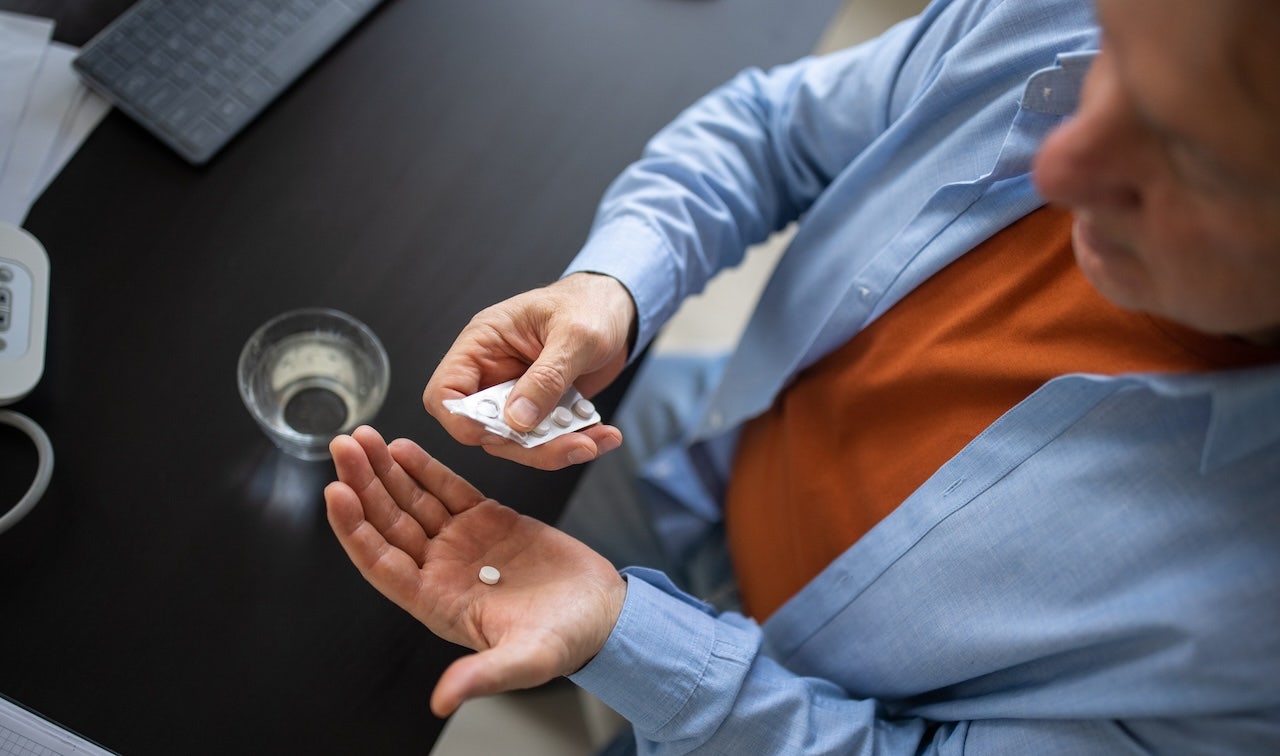Are your eyes feeling itchy, burning or watery? You may have dry eye

The Dose21:34What should I know about dry eye?
Read transcribed audio
It’s a complex condition that affects roughly one-fifth of Canadians — and that number is growing, including among young people.
Dry eye can range from mild to severe, and experts say it can have a big impact on someone’s overall health and quality of life.
Dry eye happens when the surface of the eye isn’t well-lubricated. That can be because you don’t produce enough tears, in what’s called aqueous deficient dry eye, or because the tears evaporate too quickly — that’s called evaporative dry eye.
“It’s really the surface of your eye that doesn’t have good-quality tear film, which is really important for comfort and for vision,” said ophthalmologist Dr. Johanna Choremis, an associate professor at the University of Montreal and assistant professor at McGill University.
The eye’s tear film is made up of three layers: an oily outer layer that keeps the tears from drying up, a watery middle layer that keeps the eye wet, and an inner mucus layer that helps the film stick to the eye.
“We need all those three layers to be working properly to have a good tear film,” Choremis told Dr. Brian Goldman, the host of CBC’s The Dose.
What does dry eye feel like?
The numerous symptoms of dry eye include eyes that feel irritated, itchy or gritty, being sensitive to light, and blurred vision.
Not everyone will be sensitive to the effects of dry eye, said Choremis.
“Sometimes we see very, very dry eyes on an exam and then the patient says, ‘I don’t really feel much,'” she said.
One symptom that may seem counterintuitive is having watery eyes, said Dr. Irene Mestito-Dao, an optometrist in Winnipeg.
“Excessive tearing actually happens because your corneas are so dry and so irritated that a reflex tear occurs,” said Mestito-Dao.
“The cornea signals your brain that, ‘We’re way too dry, send some water to us,’ and then it overwaters the eye.”
Those excess tears can’t properly coat your eye because they evaporate too quickly.

Experts said that dry eye needs to be taken seriously, as it can severely affect a person’s well-being.
“We hear about people having depression and being almost suicidal sometimes,” said Choremis.
“It’s rare, but it does happen.”
Who is at risk for dry eye?
Dry eye is more common as you age and more prevalent among women, particularly once they’ve gone through menopause.
The reasons why postmenopausal women are more at risk are unclear, said Dr. Allan Slomovic, a professor of ophthalmology at the University of Toronto.
After menopause, women often see a decrease in testosterone levels, but using eye drops containing testosterone to treat dry eye on those women hasn’t been effective, he said.
The condition is growing among all demographics, most likely due to increased time spent on screens, experts said.
“The more close-up work you do, the less you blink,” said Slomovic, and the less you blink, the more quickly your tears evaporate.
Dry eye in young people
The amount of time kids spend on screens is likely contributing to an increase in dry eye among those 18 and under, experts said.
“When I was young, we didn’t have phones,” said Choremis. “My son had a phone in Grade 6.”
The Canadian Association of Optometrists recommends no screen time for kids under age two, less than one hour a day for ages two to five, and no more than two hours a day for those between age five and 18.
For many families, however, that’s just not realistic, experts said.
“I guarantee you if you go to any household, there’s kids that are staring at screens more than that — either at school or at home,” said Mestito-Dao.
Experts recommend taking frequent breaks from screens to do other activities so your eyes can have a rest.
They also recommend practicing the 20-20-20 rule: Every 20 minutes, look 20 feet (six metres) into the distance for 20 seconds.

The increase of dry eye in youth could also be due to environmental factors such as air conditioning or air pollutants, said Choremis.
Beyond screen time, many factors can cause dry eye, including autoimmune disorders, wearing contact lenses, any kind of refractive eye surgery, and certain medications.
Ultraviolet (UV) radiation exposure and air pollutants such as wildfire smoke can also increase the incidence of dry eye, said Mestito-Dao and Choremis.
How can I prevent dry eye?
Potential ways to help prevent developing dry eye include running a humidifier in your home or workplace if it’s dry, eating well, drinking plenty of water, getting good-quality sleep, and taking an omega-3 supplement.
The science on omega-3s for dry eye is still inconclusive, said Slomovic, but he has had patients who said they benefited from taking it.
The first-line therapy for dry eye is artificial tears, or eye drops, said Choremis. She and Slomovic recommended finding a product that is preservative-free, as preservatives can also irritate the eyes.
Other options include ointments and anti-inflammatory eye drops.
WATCH / How screen time in affecting kids’ eye health:
For evaporative dry eye, hot compresses on the eyelids can help, as well as cleaning your eyelids with special wipes or cleaners frequently to reduce bacteria, said experts.
For more severe cases, treatments include punctal plugs, which are tiny devices that an optometrist or ophthalmologist can insert in the eyelids that block tear drainage.
There are also options for light therapy or heat and pressure therapy that targets the eyelids.
“We do need better treatments,” said Choremis. “Some of these more severe cases, you go through all these things and sometimes it’s hard to find something that will help the patient.”
If you don’t treat dry eye, it will get worse over time, Choremis said, so it’s important to see your optometrist if you notice any symptoms.
Dry eye is a chronic condition, so patients need to accept that treatment will continue for the rest of your life, experts said.
“It’s sort of a change in lifestyle,” said Mestito-Dao. “You can’t just do a treatment for a month and then think that you’re cured.”





